“Invest in seven ventures, yes, in eight; you do not know what disaster may come upon the land.”
Ecclesiastes 11:2 (NIV)
“Our goal is more modest: we simply attempt to be fearful when others are greedy and to be greedy only when others are fearful.”
Warren Buffett (1986)
Discover the purpose of your work and your corporation
What is your purpose in work?
- Seizing the chance to spearhead the investment industry within burgeoning markets.
- Pioneering a fresh paradigm for the upcoming trends in the private equity fund sector.
What drives your corporation’s core value?
- Revolutionising the investment landscape through a revitalized business model.
- Achieving business triumph while embracing a spirit of philanthropy.
Signing the Mayflower Compact 1620.
The Massachusetts Bay Company was a joint-stock trading company chartered by the English crown in 1629 to colonize New England. A group of Puritans took it up later. The Massachusetts Bay Company was an example of the early prototype of the private equity model.

1.0 Executive Summary
Mission:
- Entity: Forge strategic alliances with global investors, international operators, government agencies, local developers, and establish private equity management companies.
- Stage 1: Establish private equity funds totalling US$623 billion for 26 projects in Borneo.
Key Management Team:
- Mentors: Visionary pioneers and industry leaders with a vast global network, providing invaluable guidance and inspiration.
- Coaches: Mission-oriented industry experts offering practical solutions to challenges, ensuring the team stays focused on its objectives.
- Partners:
- A project leadership group with a successful track record in development, operation, and financial management of the business investment industry.
- Reputable investment firms with access to diverse sources of funding.
- International investment management groups.
- Visionary business entrepreneurs with high net worth and philanthropic compassion.
Product Benefits:
- Market: The new frontier market in Borneo provides direct access to a population pool of 4.6 billion and a combined GDP of US$31.58 trillion within the Asia Pacific hub.
- Exclusive: Investors enjoy exclusive rights in the target industry.
- Growth: Capitalize on growth opportunities in the Asia Pacific.
- Portfolio: Diversify investments to include emerging markets.
Target Market:
- Private equity, buyout, growth, venture, and distressed industries.
Financial Projections:
- Investment: US$623 billion
- Fee Revenue: US$12.457 billion

Unique Business Model:
- Acquire: Benefits of acquiring existing companies include rapid entry to foreign markets, economies of scale, diversification, increased market share, vertical integration, enhanced productivity, and rapid growth.
- Compete: Effective strategic alliances with international operators, funding managers, government agencies, and local developers yield competitive advantages.
- Partners: The unique model involves recruiting the target market and end buyers as part of the management partners, ensuring sustained revenues.
- Team: Strategic alliances among stakeholders shape the most dynamic management team and eliminate 95% of investment issues.
2.0 Mission
2.1 Problem
- Negative: The COVID-19 crisis led to a global growth reduction of -4.9% in 2020.
- Unknown: International private equity groups face challenges in the emerging markets of the Asia Pacific due to limited exposure, narrow scope, and cultural barriers.
Challenges faced by international groups – Australia example

2.2 Solution
- Invest: Identify opportunities and establish private equity funds focusing solely on rapid growth and higher profitability investments in the emerging markets of Borneo.
2.3 Mission
- Entities: Form a strategic alliance with global investors, international operators, government agencies, local developers, and establish private equity management companies.
- Stage 1: Set up private equity funds totaling US$623 billion for 26 projects in Borneo.
3.0 Product
3.1 Product Description
The funds will strategically invest in target segments that present distinctive products, services, and business models.
| Industry | Project | Fund (US$/billion) |
| Agriculture | Cassava plantation | 0.58 |
| Agriculture | Oil Palm plantation | 4.00 |
| Agriculture | Timber plantation | 1.40 |
| Aquaculture | Fishery | 0.63 |
| Aviation | Low-cost airline | 0.23 |
| Aviation | Low-cost airport | 0.27 |
| Chemical | Specialty chemical | 3.60 |
| Education | International school | 0.13 |
| Health | Aged care retirement villages | 10.31 |
| Infrastructure | Construction | 86.70 |
| Infrastructure | Highway | 30.80 |
| Infrastructure | Railway | 10.10 |
| Infrastructure | Seaport | 13.00 |
| Infrastructure | Water supply | 19.80 |
| Migration | New migrants | 198.00 |
| Logistics | Cold Chain Logistics | 0.60 |
| Mining | Coal | 1.60 |
| Mining | Gold | 0.17 |
| Mining | Oil and Gas | 1.44 |
| Real Estate | Indonesia New Capital | 27.00 |
| Real Estate | Property development | 196.00 |
| Real Estate | Special Economic Zone | 12.00 |
| Tourism | Ecotourism | 0.02 |
| Tourism | Experiential tourism | 0.09 |
| Tourism | Special event tourism | 0.38 |
| Tourism | Hotel | 4.00 |
| Financial | Private equity fund | 622.85 |
Functions of private equity firms

3.2 Product Attributes
- Unique: These projects feature distinct attractions exclusive to Borneo.
- Success: Special attributes include:
- Securing the target market
- Unique business models offering competitive advantages
- A powerful strategic partnership and a management team with a proven track record.
- Solid: These projects offer:
- Tangible assets like gold, oil, and real estate as hedges against inflation
- Foundational investments in agriculture, logistics, health, education, infrastructure, tourism, and more.
- Addressing actual needs of the Asia Pacific markets.
- Promising rapid growth and high returns.
Private Equity Fund Investment Pathway
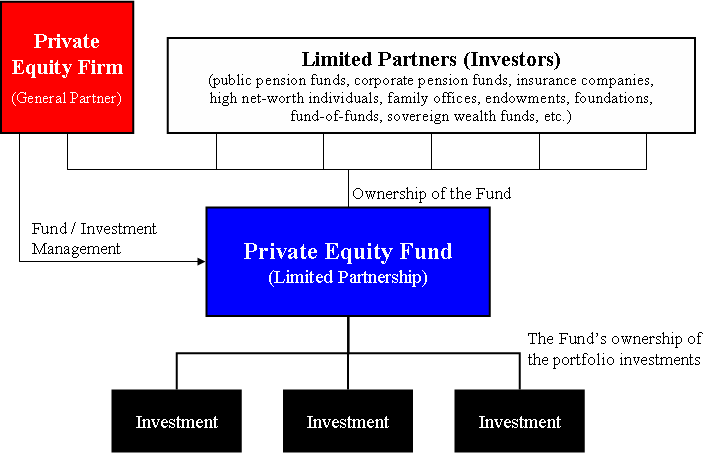
3.3 Product Benefits
- Market: The new frontier market in Borneo provides direct access to a population pool of 4.6 billion and a combined GDP of US$31.58 trillion within the Asia Pacific hub.
- Exclusive: Investors enjoy exclusive rights in the target industry.
- Growth: Capture growth opportunities in the Asia Pacific.
- Portfolio: Diversify investments to include emerging markets.
3.4 Product Competitive Advantages
- Team: A robust team with proven track records.
- Target: Secure demand from target customers.
- Viability: Finance by international and local investors with solid support from the government.
4.0 Market
4.1 Market Segment

| Industry Segment | Funding |
| Agriculture | Buyout |
| Aquaculture | New project |
| Aviation | Distressed asset |
| Specialty chemical | New project |
| Education | Growth capital |
| Health | Growth capital |
| Infrastructure | Growth capital |
| Migration | Government and sovereign fund |
| Logistics | Buyout |
| Mining | Buyout |
| Real Estate | Growth capital |
| Tourism | Distressed asset |
| Financial | Private equity funds |
4.1 Funding Strategies
- PE (Private Equity): Private equity funds for these projects are based on a strategy of capital growth, stable income, and higher profits.
- Buyout: Buyouts acquire projects through large capital, providing more control to investors.
- Growth: Growth capitals fund mature companies seeking capital for expansion and acquisitions in new markets in Borneo.
- Venture: Venture capital provides funds to startups and new companies pursuing high-growth, high-return, and higher-risk projects.
- Distressed: Distressed projects target companies facing financial and business difficulties.
4.2 Target Market Strategy
- Team: Strategic alliance between a powerful management team:
- Fund managers with a network of global high net worth investors.
- Specialist operators with in-depth industry knowledge.
- Supporting government agency expediting approvals and implementing financial and business infrastructure policies.
- Local developers aiding in site selection, labor organization, and cultural interaction.
- A defined customer base.
- Financial Goals:
- High growth, higher profit, capital gain, and stable income are major financial goals.
- Expert Industry Specialization:
- Project developers, private equity fund managers, and operational partners have extensive successful track records in target industries.
- Time Milestones:
- Search and pool capitals: 2 years
- Invest and manage companies: 4–7 years
- Exit / concession: 2–30 years
4.3 Market Needs
| Industry | Needs |
| Agriculture | Animal feed / competitive edible oil for developing nations |
| Aquaculture | North Asia market |
| Aviation | Low-cost travel for mass-market tourists |
| Specialty chemical | Expansion into emerging markets |
| Education | Expatriate workers |
| Health care | Retirement homes |
| Infrastructure | Stable long-term income for investors |
| Migration | GDP growth |
| Logistics | Cold storage needs in the tropics |
| Mining | Basic building block |
| Real Estate | Migration and new economic activities |
| Tourism | New vision and development |
| Financial | Private equity funds |
4.4 Growth Drivers
- Growth: Robust economy attracting investors. By 2030, APAC will account for 70% of the world capital stock.
- Demand: Growing demand from the middle class in Asia for new products and services.
- Compete: Producers and manufacturers will switch their operations to a lower-cost center.
- APAC Growth Fund: A dedicated fund to leverage opportunities arising from the growth in the Asia-Pacific region.
APAC- Focused Fund
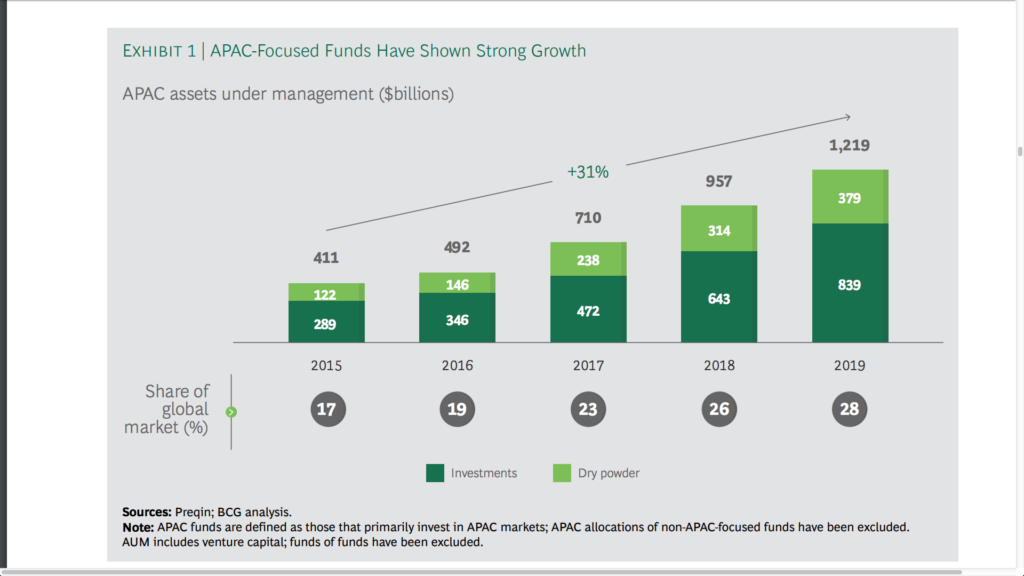
4.5 Key Customers
| Industry | Target Customer Market |
| Agriculture | Brunei, Indonesia, Malaysia – Feed mills / India, China – Oil refineries. |
| Aviation | North Asia, India, and Middle East – MNCs with large employees. |
| Specialty Chemical | Distributors and licensed manufacturers in Asia. |
| Education | MNC expatriates. |
| Healthcare | European expatriates, Asian diaspora communities. |
| Infrastructure | Government agencies. |
| Migration | International, regional, and local migrants. |
| Logistics | Cold storage industry. |
| Mining | Steelmakers in Asia / Gold smelters in China and India / Refineries. |
| Real Estate | Residential and retail sectors in Borneo. |
| Tourism | Tourists from the Asia Pacific. |
4.6 Industries and Competition
1. Key global private equity firms (Additional key players are highlighted under other chapters)
- Advent International
- American Securities
- Apollo Global Management
- Ardian
- Ares Management
- Bain Capital
- BC Partners
- BDT Capital Partners
- Blackrock
- Blackstone Group
- Bridgepoint
- Brookfield Asset Management
- Carlyle Group
- Cinven
- Clayton Dubilier & Rice
- Clearlake Capital Group
- CVC Capital Partners
- EnCap Investments
- EQT Partners
- Francisco Partners
- General Atlantic
- Genstar Capital
- Hellman & Friedman
- Insight Partners
- Kohlberg Kravis Roberts (KKR)
- Leonard Green and Partners
- MBK Partners
- Neuberger Berman Group
- Partners Group
- Permira
- Platinum Equity
- Silver Lake
- Stone Point Capital
- TA Associates
- Thoma Bravo
- TPG Capital
- Warburg Pincus
- Vista Equity Partners.
2. Key Asia private equity firms (Additional key players are highlighted under other chapters)
- ADV Partners
- Affinity Equity Partners
- Altair Capital
- Archer Capital
- Arowana Growth Fund
- Axiom Asia Private Capitalhttps://www.capitalsquarepartners.com/about
- Baring Private Equity Asia
- Bohai Trust
- Bright Stone
- Capital Square Partners
- CDH Investments
- China Asean Fund
- China Fortune Trust
- China Merchant Capital
- China Minsheng Trust
- CITIC Capital
- CPE Capital
- Credence Partners
- DST Global
- Everstone Group
- Fiera Capital
- FountainVest Partners
- GGV Capital
- GIC
- Hillhouse Capital Group
- Hony Capital
- HOPU Investment Management
- H&Q Asia Pacific
- IDG Capital
- Innohub
- Leopard Capital LP
- MBK Partners
- Mekong Capital
- Navis Capital
- Northstar Group
- Orchid Asia Group
- OSK Vetures International
- PAG
- Pacific Equity Partners
- Polaris Capital Group
- Quadria Capital
- Quadrant Private Equity
- Queensland Investment Corp (QIC)
- Quilvest Private Equity
- Redpoint Ventures
- RRJ Capital
- Seavi Advent
- Silk Road Fund
- Sino IC Capital Stepstone Group
- SVB Financial Group
- TAEL Partners
- Tembusa Partners
- Tin Men Capital
- Vertex Holdings
- VI Ventures
- Welkin Capital Management
- YF Capital
- Zhongzhi Capital.
3. Key Private and Growth Equity Funds that invest in Asia (Additional key players are highlighted under other chapters)
- 3i Investments
- ACA Investments
- Actis
- Adams Street Partners
- Advent International
- Ardian
- Artesian Venture Partners
- Avenue Capital Group
- Bain Capital
- Battery Venture
- Carlyle Group
- Dymon Asia Private Equity
- Eight Roads
- EQT Partners
- General Atlantic
- Goldman Sachs
- Horsley Bridge Partners
- Insight Venture Partners
- Kestrel Capital
- KKR
- L Catterton
- Light Speed Venture Partners
- Matrix Partners
- Oaktree Capital
- Quantum Global
- Sequoia Capital
- SOSV
- TA Associates
- Terra Firma
- TPG Capital
- Warburg Pincus.
3. Top Greater China-Focused Private Equity Funds (As at 29 March 2016)
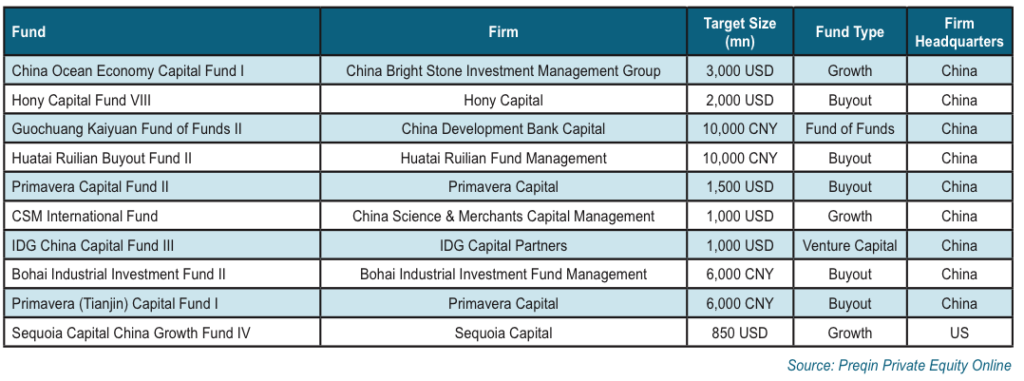
4. Key Asia Pacific Venture Capital & Private Equity Associations
- Asian Venture Capital Private Equity Council (AVCPEC)
- Asosiasi Modal Ventura Untuk Startup Indonesia (AMVESINDO)
- Australian Private Equity & Venture Capital Association Limited (AVCAL)
- China Association of Private Equity (CAPE)
- Hong Kong Venture Capital & Private Equity Association (HKVCA)
- Indian Private Equity & Venture Capital Association (IVCA)
- Japan Venture Capital Association (JVCA)
- Korean Venture Capital Association (KVCA)
- Malaysian Venture Capital & Private Equity Association (MVCA)
- Singapore Venture Capital & Private Equity Association (SVCA)
- Taiwan Mergers & Acquisitions and Private Equity Council (MAPECT)
- Thai Venture Capital Association (TVCA)
5.0 Operation
5.1 Private equity fund operation

https://files.pitchbook.com/website/files/pdf/Private_Markets_Guide.pdf
5.2 Private equity operation essentials
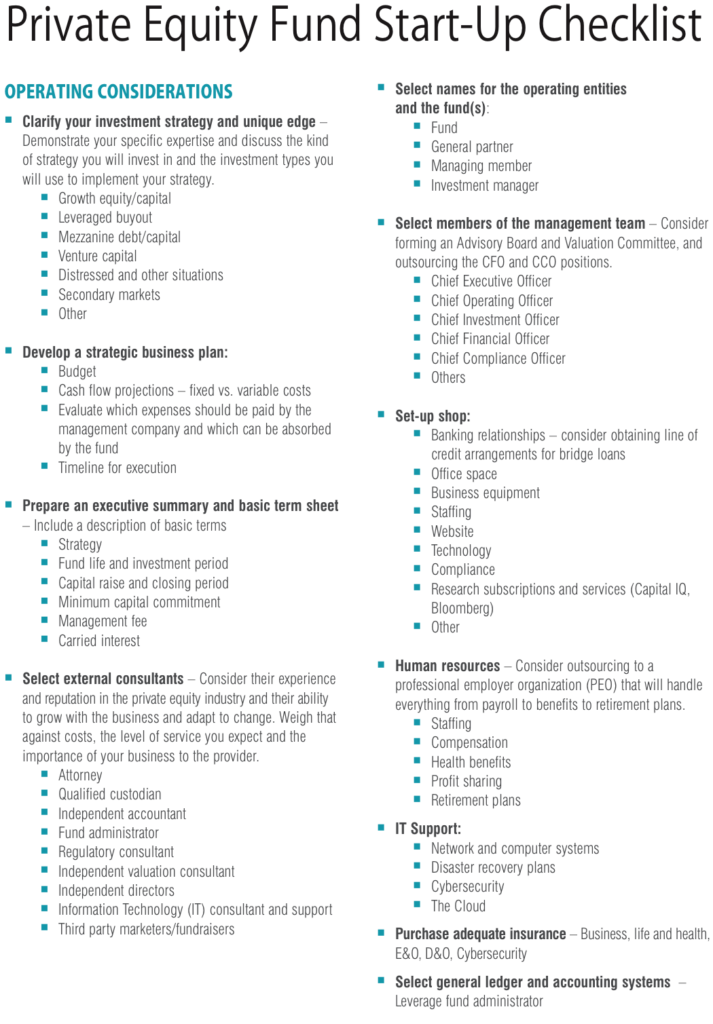
5.3 Operation stages in the private equity investment process
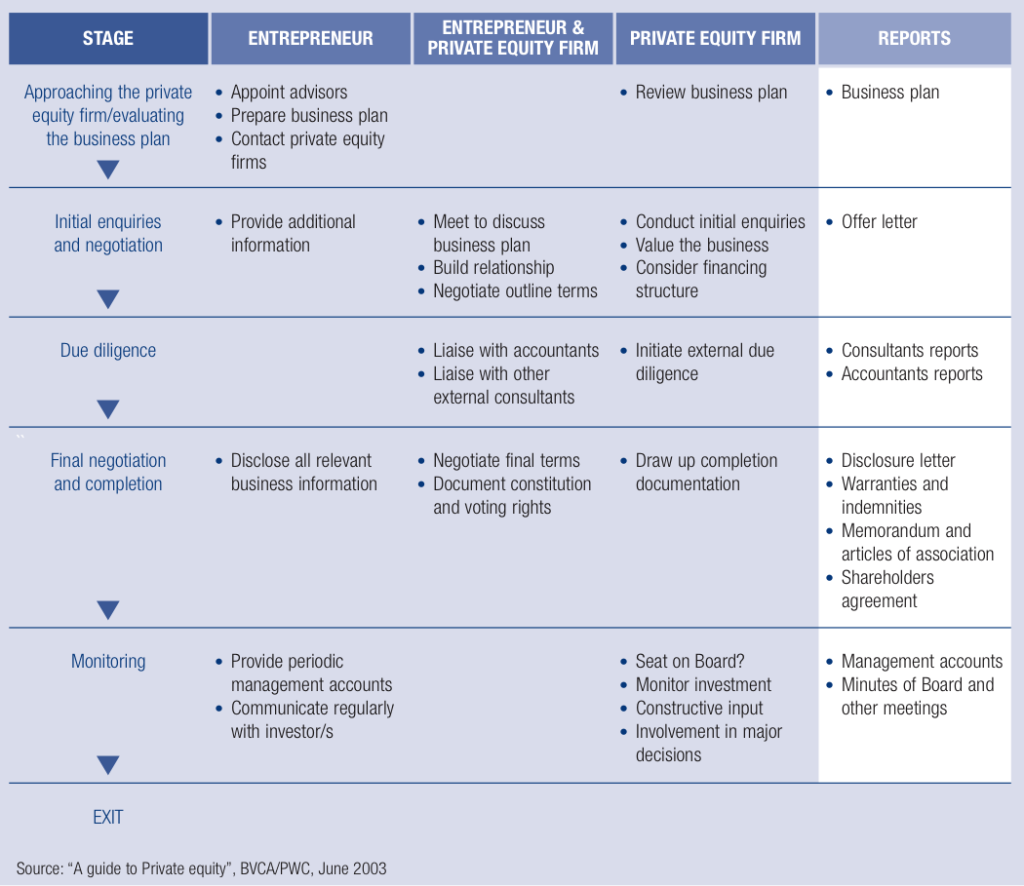
6.0 Financial Implications
6.1 Investment Segment
- Food: Agriculture and aquaculture segments cater to domestic and regional food demand within the Asia Pacific market. Target markets include animal feed, edible oil, fishery, and timber downstream industries. Short-term returns are expected.
- Distress: Aviation and tourism segments offer distressed asset investments. The aviation industry in Asia is undergoing restructuring and rationalization phases, with the target industry expected to emerge stronger. This segment provides a midterm investment cycle.
- Bases: Specialty chemical, mining, infrastructure, logistics, and real estate are industries providing the basic building block for business growth. These segments offer a longer-term investment strategy, with acquisitions enhancing rapid market entry.
- Social: Education and health (age care retirement villages) are essential services for expatriate and local niche markets. Strategic alignment with existing education and healthcare groups will enhance success in this segment.
Total Investment: US$622.85 billion in 26 segments
6.2 Private Equity Costs
- Management Fee:
- LP pays the fee from the fund’s assets to the manager (GP) for investment management services. The industry benchmark is around 2%.
- Performance Fees / Carried Interest:
- Incentive fee of 20% (or other agreed percentage) of profits above the agreed benchmark, to be paid by the LP.
- Transaction and Operational Cost:
- Includes organizational, investment, service provider, insurance, regulatory, and tax expenses.
- Extraordinary Expenses:
- Includes litigation costs.
- Borrowing Costs.
- Placement Agent Fees.
- Business Operation Costs:
- Includes staff costs, director fees, rent, and utilities.
6.3 Private Equity Revenue
- Fee:
- Private equity firms generate revenue by charging management and performance fees from investors in a fund. A yearly management fee of around 2% of the invested amount is charged to the limited partners (LP).
- Waterfall:
- There are four tiers in a distribution waterfall schedule:
- Return of Capital: LP investors receive 100% of their initial capital.
- Preferred Return: LP investors receive the preferred return (7-9%) of the remaining amount.
- Carried Interest: Around 20% of the performance fee on the profit is paid to the GP upon fund exit when the fund’s profit exceeds an agreed level, usually around 8-10%.
- 80/20 Share: The remaining profit is divided, with 80% going to the LP investors and 20% to the GP.
- There are four tiers in a distribution waterfall schedule:
Fee: US$622.85 billion X 2% = US$12.457 billion
Two and twenty revenue

6.4 Financial Returns
Case Study 1: China
- One-year return on investment for 15,000 private equity products exceeded 30%.
Case Study 2: APAC
- The average Internal Rate of Return (IRR) in the Asia Pacific market is at 12%. The top performer reached 16% for the emerging markets.
Case Study 3: US
- Private equity funds in the US produced around 10.48% return per year between 2000–2020.


Source: Bain & Co. Kiki Yang, Sriwatsan Krishnan, and Johanne Dessard 2020
Images: Used with permission from Bain & Company.
2019 Public listed international group
| Company | Revenue (US$) | Net Income (US$) |
| Apollo Global Mngmt | 2.8 billion | 0.8 billion |
| Ares Management Corp | 1.8 billion | 140 million |
| Blackstone Group | 6.0 billion | 2.1 billion |
| Carlyle Group | 3.4 billion | 0.4 billion |
| EQT Partners | 683 million | 182 million |
| Kohlberg Kravis Roberts | 4.7 billion | 2.0 billion |
| TPG Capital | 2.1 billion | 481 million |
| Warburg Pincus | 2.1 billion | 481 million |
Top private equity stocks with high returns 2021:
| Rank | Company | Price Gain Year to Date (%) |
| 1 | Oxford Square Capital Corp | 62.30% |
| 2 | Prospect Capital Corporation | 48.80% |
| 3 | Gladstone Investment Corp | 39.44% |
| 4 | BlackRock Capital Investment Corp | 35.69% |
| 5 | Apollo Investment Corp | 34.93% |
| 6 | TCG BDC | 33.72% |
| 7 | KKR and Co | 31.66% |
| 8 | IAC/InterActiveCorp | 31.18% |
| 9 | Main Street Capital Corp | 30.94% |
| 10 | TCP Capital Corp | 29.89% |
6.5 Source of Funding
1. Strategic Investors:
- New Investors:
- Limited Partners (LP) and General Partners (GP).
- Financiers:
- Sovereign wealth funds, pension funds, private equity funds, high net-worth individuals, family offices, foundations, fund-of-funds, and institutional investors.
- Developers:
- International developer groups that focus on emerging markets in Asia.
- Operators:
- Global operators of the industry segments.
2. Private Equities and Investors
Largest private-equity firms by PE capital raised 2023
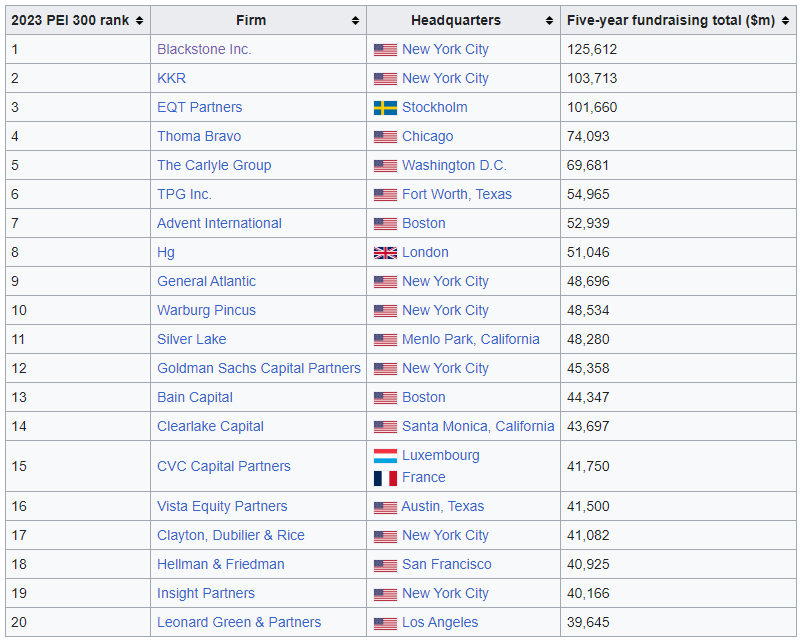
- AAC Capital
- ABS Capital Partners
- ACA Investments
- Actis
- Adams Street Partners
- Adage Capital Management
- Advent International
- Advisors Asset Management
- AHL Partners
- Allspring Global Investments
- Apax Partners
- Akre Capital Management
- Alkeon Capital Management
- Apollo Global Management
- American Securities
- Ardian
- Ares Management
- Aristotle Capital Management
- Artesian Venture Partners
- Avenue Capital Group
- Bain Capital Private Equity
- Baring Private Equity Asia
- Battery Venture
- BC Partners
- BDT & Company
- BlackRock
- Blackstone Group
- BMO Asset Management
- Burgundy Asset Management
- Cantillon Capital Management
- Capital Research & Management
- Carlyle Group
- Chicago Growth Partners
- China Investment Corp
- Cinven
- Clayton Dubilier & Rice
- Clearlake Capital Group
- Clough Capital Partners
- CVC Capital Partners
- Diamond Hill Capital Management
- Dimensional Fund Advisors
- Eagle Capital Management
- Empyrean Capital Partners
- EnCap Investments
- EQT Partners
- Farallon Capital Management
- Fidelity International
- First Manhattan
- Five Overseas Investment
- General Atlantic
- GIC
- Gladstone Investment
- Goldman Sachs Capital Partners
- Governors Lane
- Hellman & Friedman
- Heritage Trust
- Insight Partners
- Invesco Capital Management
- Investor AB
- JP Morgan Asset Management
- Kestrel Capital
- KKR
- Kuwait Investment Authority (Investment Company)
- L Catterton
- Lazard Asset Management
- Legal & General Investment Management
- Light Speed Venture Partners
- LSV Asset Management
- Macquarie Asset Management
- Magnetar Financial
- Managed Account Advisors
- Main Street Capital
- Massachusetts Financial Services
- Millennium Management
- Mizuho Financial Group
- Morgan Stanley Wealth Management
- Muzinich
- MBK Partners
- New Jersey Division of Investment
- Neuberger Berman Group
- Nomura Securities
- Oaktree Capital Management
- Omnes Capital
- Partners Group
- Permira
- Platinum Equity
- Principal Asset Management
- Prospect Capital Management
- Putnam Investment Management
- RBC Capital Markets
- Roundwood Asset Management
- Schroders
- Sculptor Capital
- Southeastern Asset Management
- State Street Global Advisors
- Stone Point Capital
- TA Associates
- TD Asset Management
- Temasek Holdings
- Terra Firma Capital Partners
- Thoma Bravo
- Thornburg Investment Management
- TPG Capital
- Trimaran Capital Partners
- T. Rowe Price
- UBS Asset Management
- United States Trust
- ValueAct Capital Management
- Van Berkom & Associates
- Van Eck Associates
- Vanguard Group
- Värde Management
- Vulcan Value Partners
- Wallenberg Investments
- Warburg Pincus
- Wellington Management
3. Consultants, development and funding managers to the financial industry:
- BCG Group
- Deloitte
- Ernst & Young
- FundComb
- KPMG
- McKinsey & Company
- Preqin
- Private Equity International (PEI)
- PwC
- S&P Listed Private Equity Index
- SmartAsset Advisors.
6.6 Rapid Entry Industry
Low hanging fruits projects:
- Agriculture
- Infrastructure
- New Capital Relocation
- Property development
- Tourism
7.0 Management Team
7.1 Key Management Team:
- Mentors: Visionary pioneers and industry leaders with a vast global network, providing invaluable guidance and inspiration.
- Coaches: Mission-oriented industry experts offering practical solutions to challenges, ensuring the team stays focused on its objectives.
- Partners:
- A project leadership group with a successful track record in development, operation, and financial management of the business investment industry.
- Reputable investment firms with access to diverse sources of funding.
- International investment management groups.
- Visionary business entrepreneurs with high net worth and philanthropic compassion.
In the private equity and financial investment industry, several global leaders have made significant contributions, shaping its growth and success. Here is a list of some of these remarkable individuals, honoured for their vision and dedication:
- Gautam Adani
- José E. Feliciano
- Larry Fink
- Henry R. Kravis
- Professor Vladimir Lisin
- Stephen Schwarzman
These are just a few of the outstanding professionals and captains of the industry. The readers are encouraged to explore further and conduct their research to learn more about the management teams in this dynamic field.
7.2 Key Management Team Model

8.0 Unique Business Model
8.1 Successful Track Record
The key factor is to select winning partners, invest in the right product within the high-growth industry at the right place and at the right time. The success is based on:
- Management Team with Diverse International and Asia Pacific Experience.
- Differentiation through Cost Transformation and Higher Productivity Performance.
- Aggressive Strategy to Pursue Larger Market Share through Acquisition, Buyout, and Alignment with Target Customers.
- Long-Term Investment, Dominant Player in the Industry, Experienced Operator, and Strong Government Support.
8.2 Entry Model
- Acquire:
- The private equity fund will buy 100% of the target firm in the new frontier market in Borneo, with the option of the previous owner to stay on for a period until the new operator is ready.
- Partner:
- Another option is a strategic partnership with the existing owner, with the private equity providing new capital for the expansion program.
- Growth:
- The private equity fund will provide additional capital to speed up the rapid growth strategy.
- Buyout:
- Funding is through a leveraged buyout, using the assets as collateral and support from private investors and institutional funds.
- Team:
- The private equity firm will inject new capital, set up a new management team to contribute creative ideas to generate business innovations and attainment of financial goals.
- New: Search Fund Model
- Another popular model is to set up a search fund of US$250,000 – $500,000 for the entrepreneur to identify and acquire the business that offers rapid growth, higher profit, and a unique business model.
- The search fund is invested by 10–15 private individuals. The time frame for the search is about two years.
- A successful find will assure funding up to US$20 million in the purchase and position the businessperson at the executive level.
- Exit strategy is to sell and capitalize on the profits in five to seven years’ time frame.
Entry Model Options Sources:
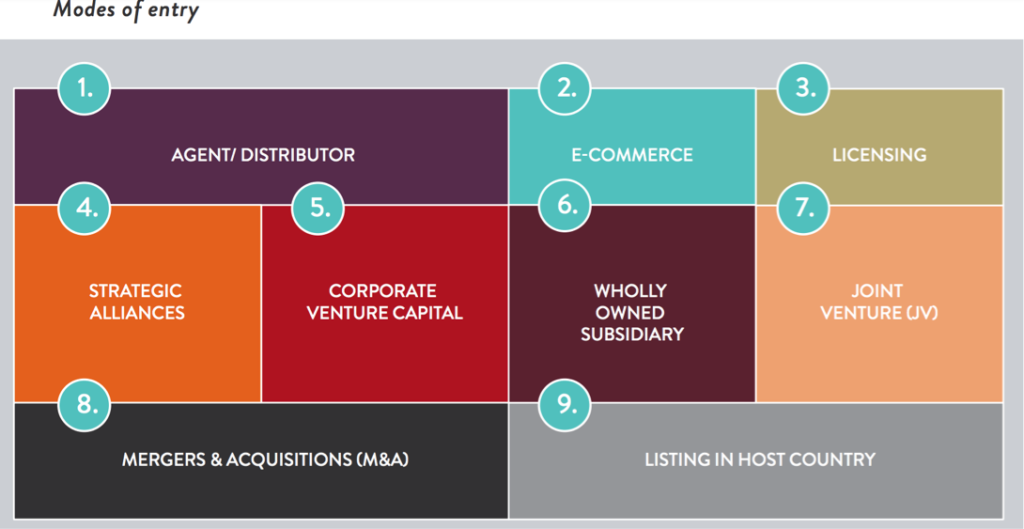
8.3 Unique Business Model
Entry model compare

- Acquire:
- Benefits include rapid entry to a foreign market, economies of scale, diversification, increased market share, vertical integration, enhanced productivity, and rapid growth.
- Compete:
- Effective strategic alliances with international operators, funding managers, government agencies, and local developers will produce competitive advantages.
- Partners:
- The unique model includes the recruitment of the target market and end buyers as part of the management partners, ensuring revenues.
- Team:
- The strategic alliance between all stakeholders helps shape the most dynamic management team and eliminates 95% of the investment issues.
Private Equity Business Model
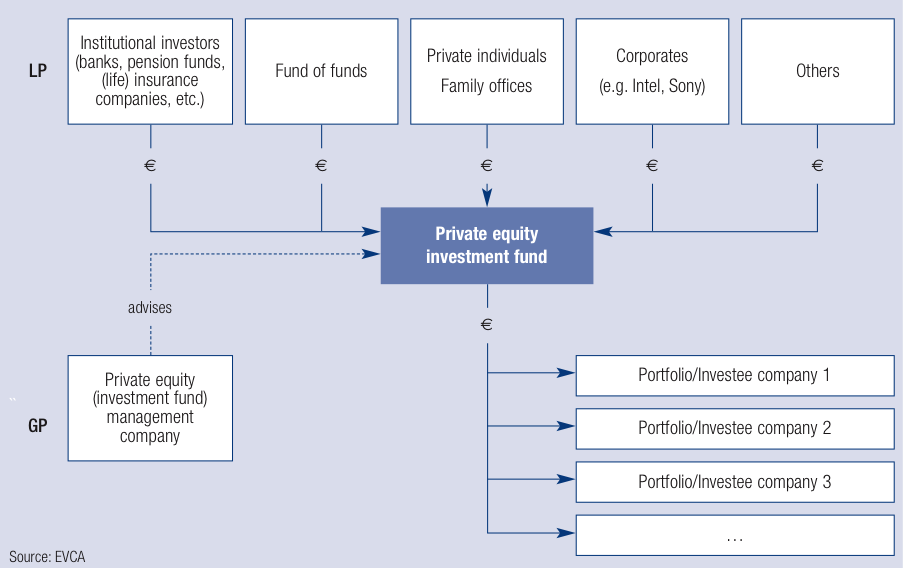
9.0 Key Success Factors & Risk Mitigation
9.1 Key Success Factors
- Strategy:
- Identify and capture growth opportunities with higher rates of return potential. The assets are undervalued or badly managed. Investors inject funding and improvement strategies to turn around business performance.
- Team:
- Form winning teams, establish a critical network, and enhance operational performance to explore the maximum potential of undervalued companies.
- Culture:
- Successful businesses in Asia incorporate cultural values, including family-based relationships.
- Long-Term:
- Long-term investment vision is a key success factor inherent in private companies in Asia.
9.2 Risk
- Stability:
- Political instability, frequent changes in legal and government policies are common traits in Asia.
- Ethics:
- Cultural norms of the host country can impose serious compliance risks for foreign investors. Illegal bribes can adversely affect the reputation of the involving parties.
- Culture:
- Asian strategy focuses on long-term investment against Western short-term results of short-term growth and profitability.
- Changes:
- Business dynamics and market trends can change drastically with disruption.
- Local:
- Acquisition of local knowledge requires groundwork and robust governance.
9.3 Risk Mitigation
- Political:
- Plan and constantly monitor macroeconomics and microeconomic factors. Maintain a close connection with government agencies.
- ESG:
- Good governance, full compliance, and regular due diligence audits.
- Vision:
- Long-term investment vision.
- Speed:
- Identify and capture opportunities and gain early mover advantages.
- Team:
- Leaders and senior executives with Asia experience.
10.0 Exit Strategy
10.1 Forms of Exit
- Forms: IPO, buy-out, M & A, and transfer.
10.2 Key Attractions for New Investors
- Portfolio:
- Diverse projects provide investment opportunities in the emerging market.
- Revenue:
- Long-term revenue projects.
- Demand:
- Secure target market.
- Team:
- Solid management team with successful track records.